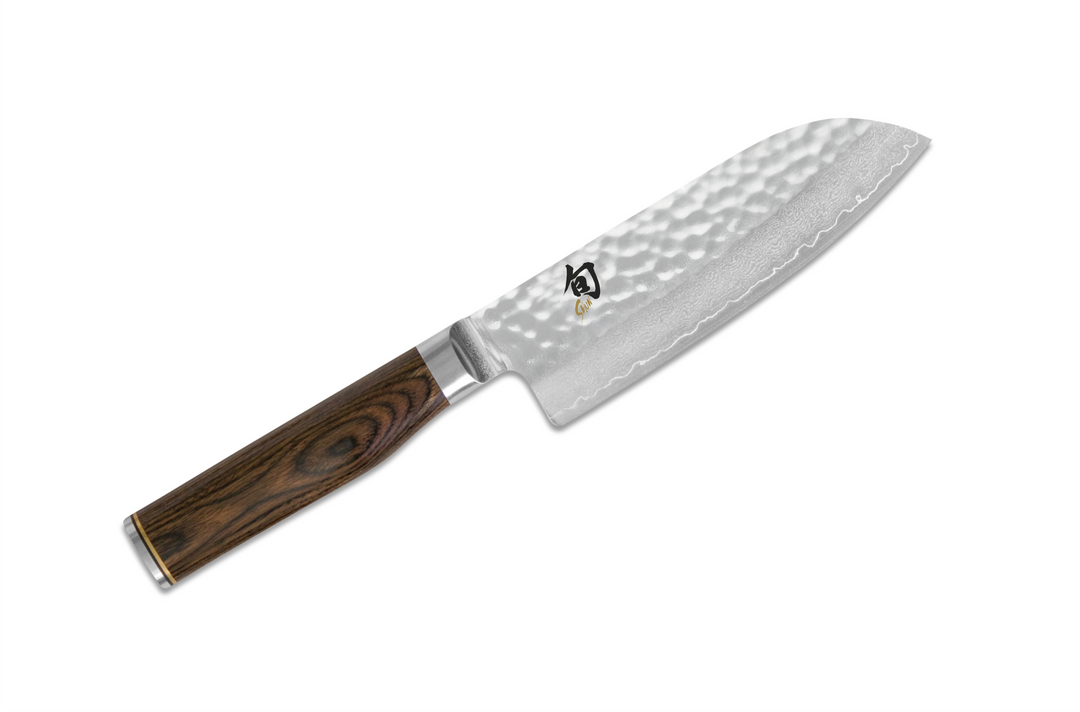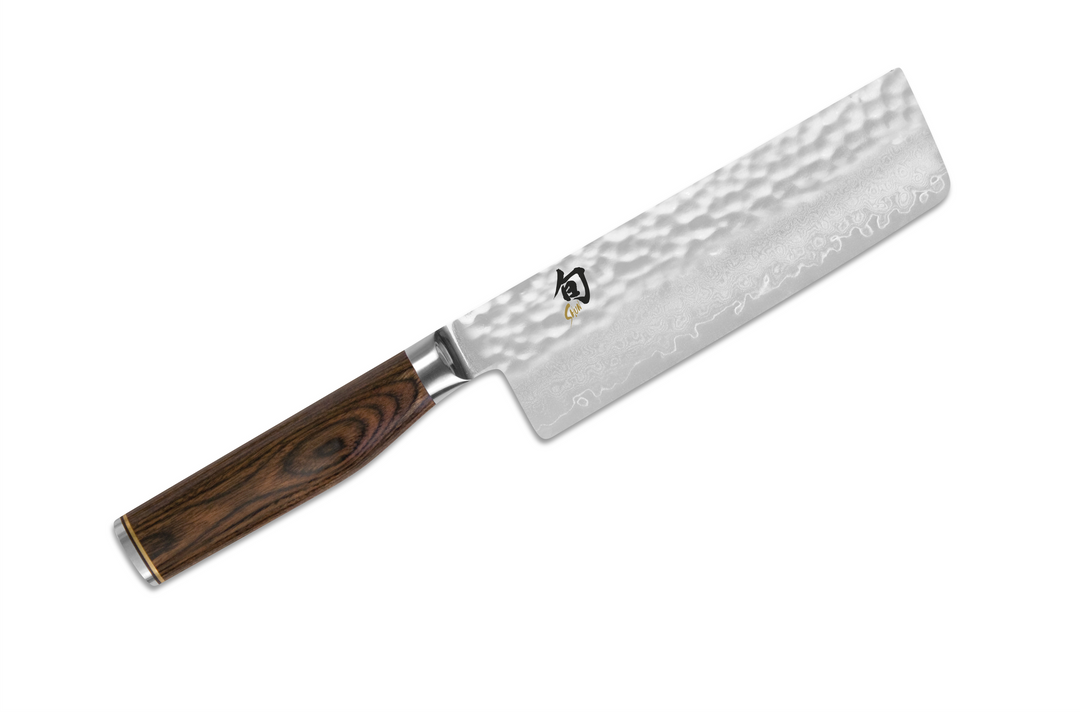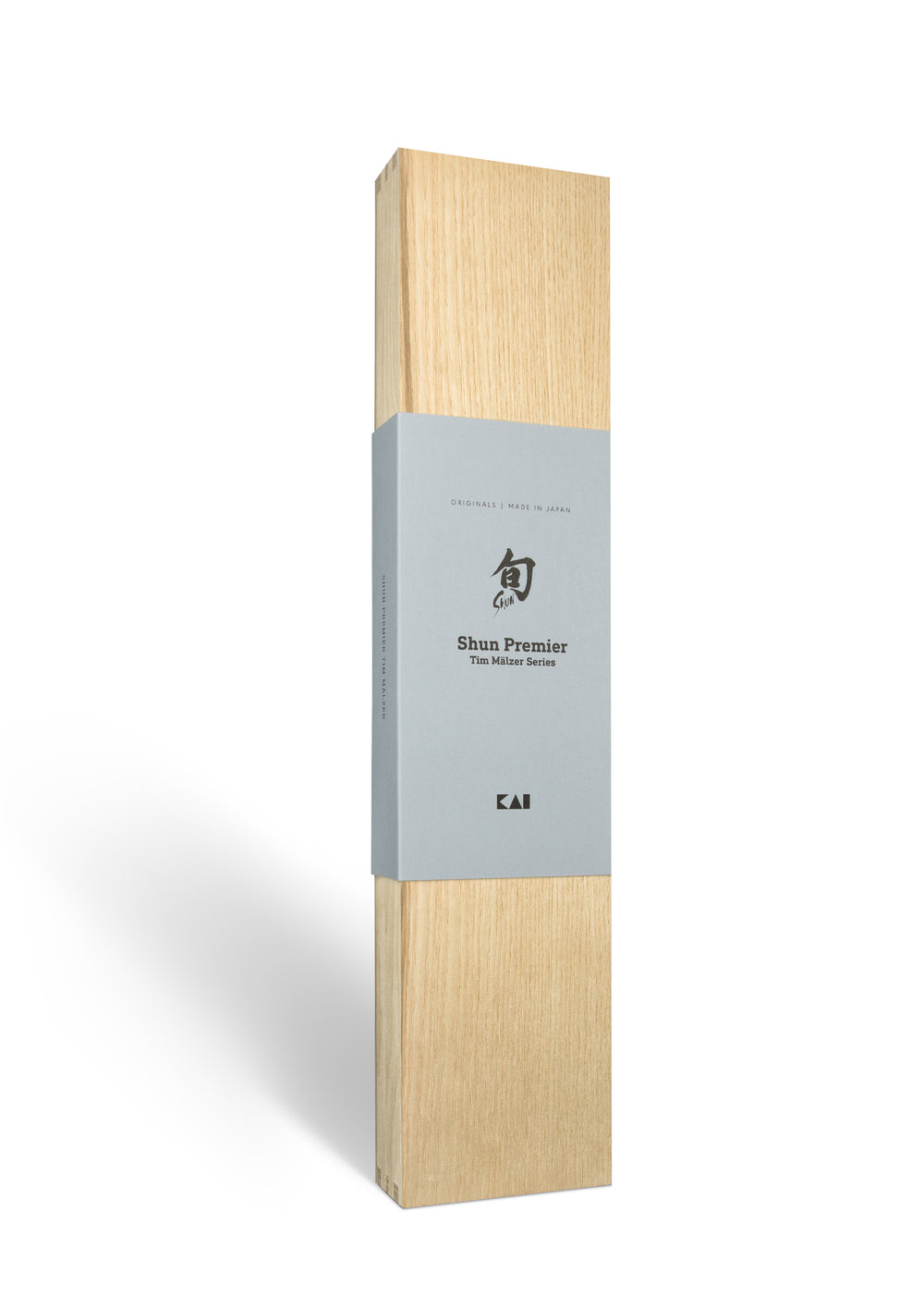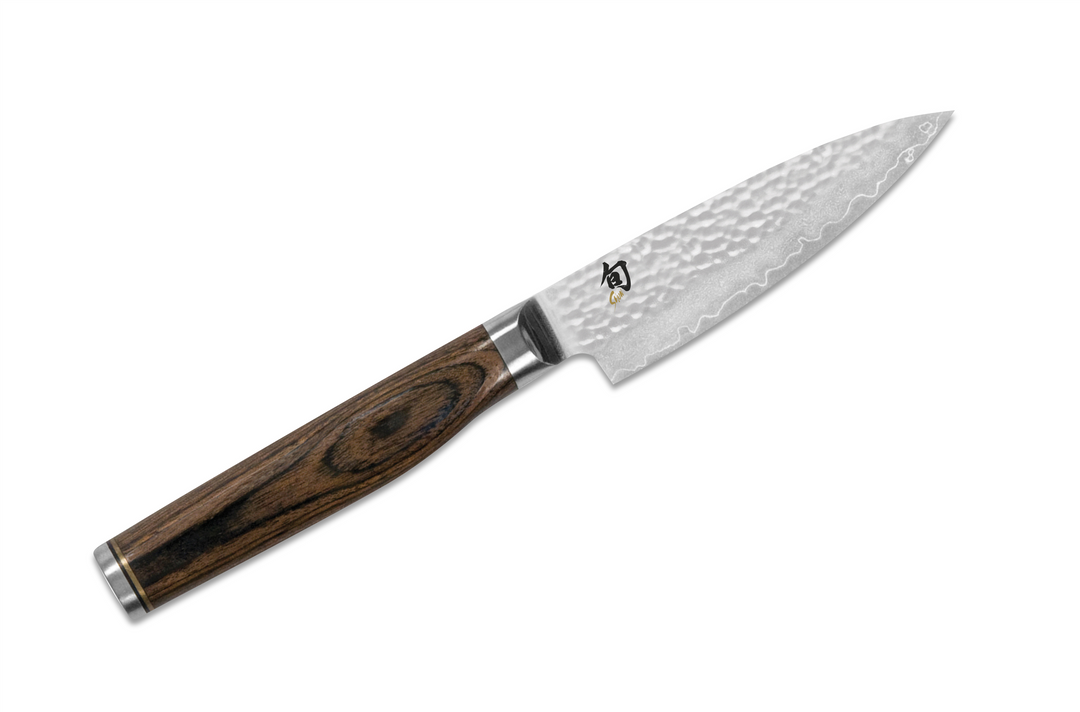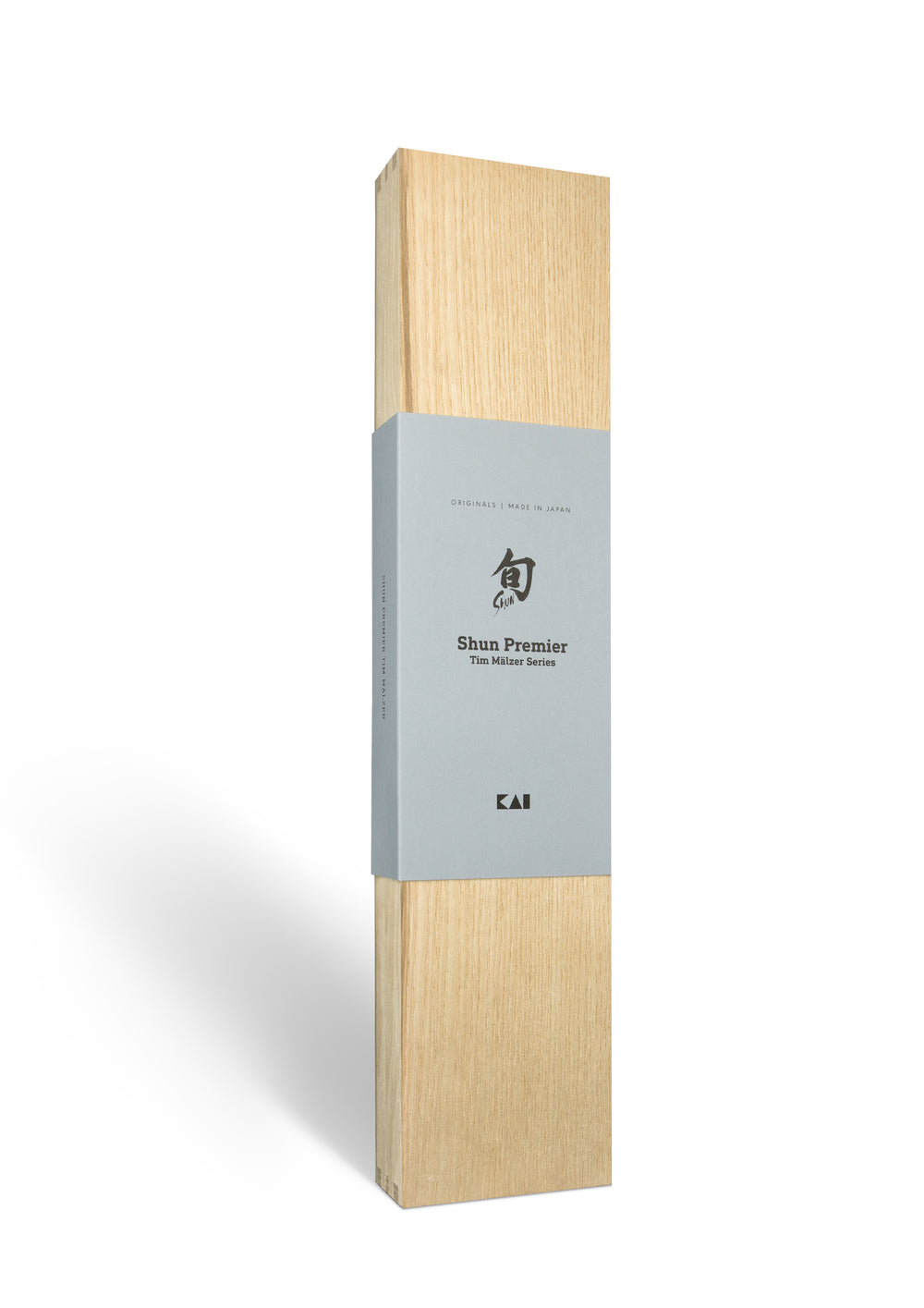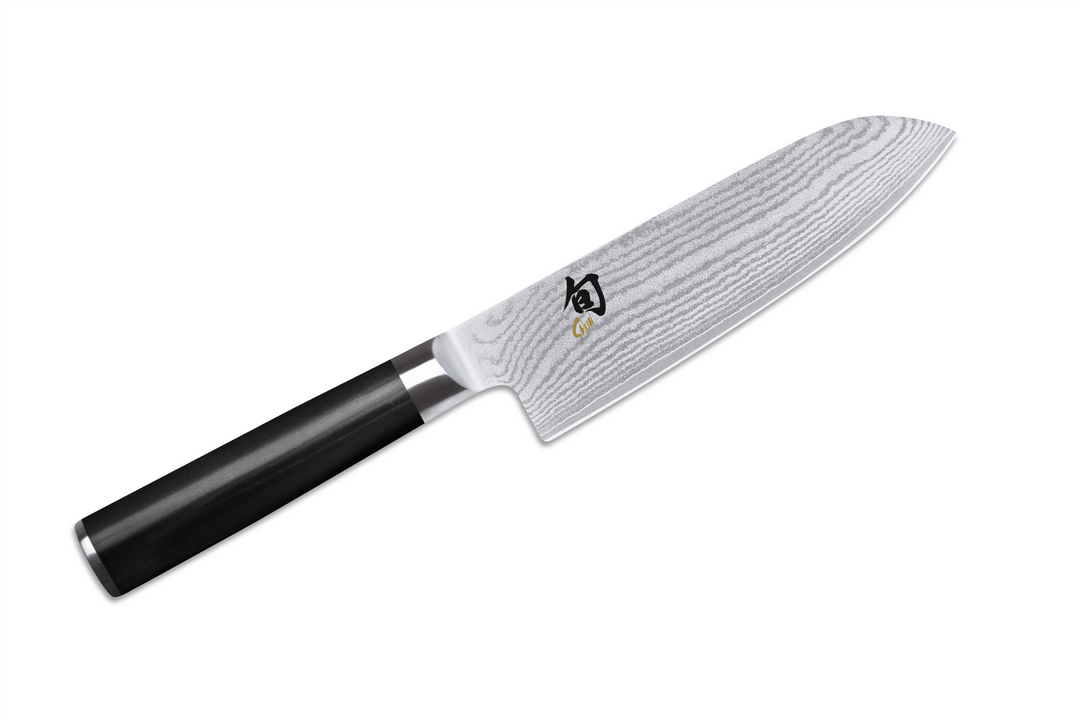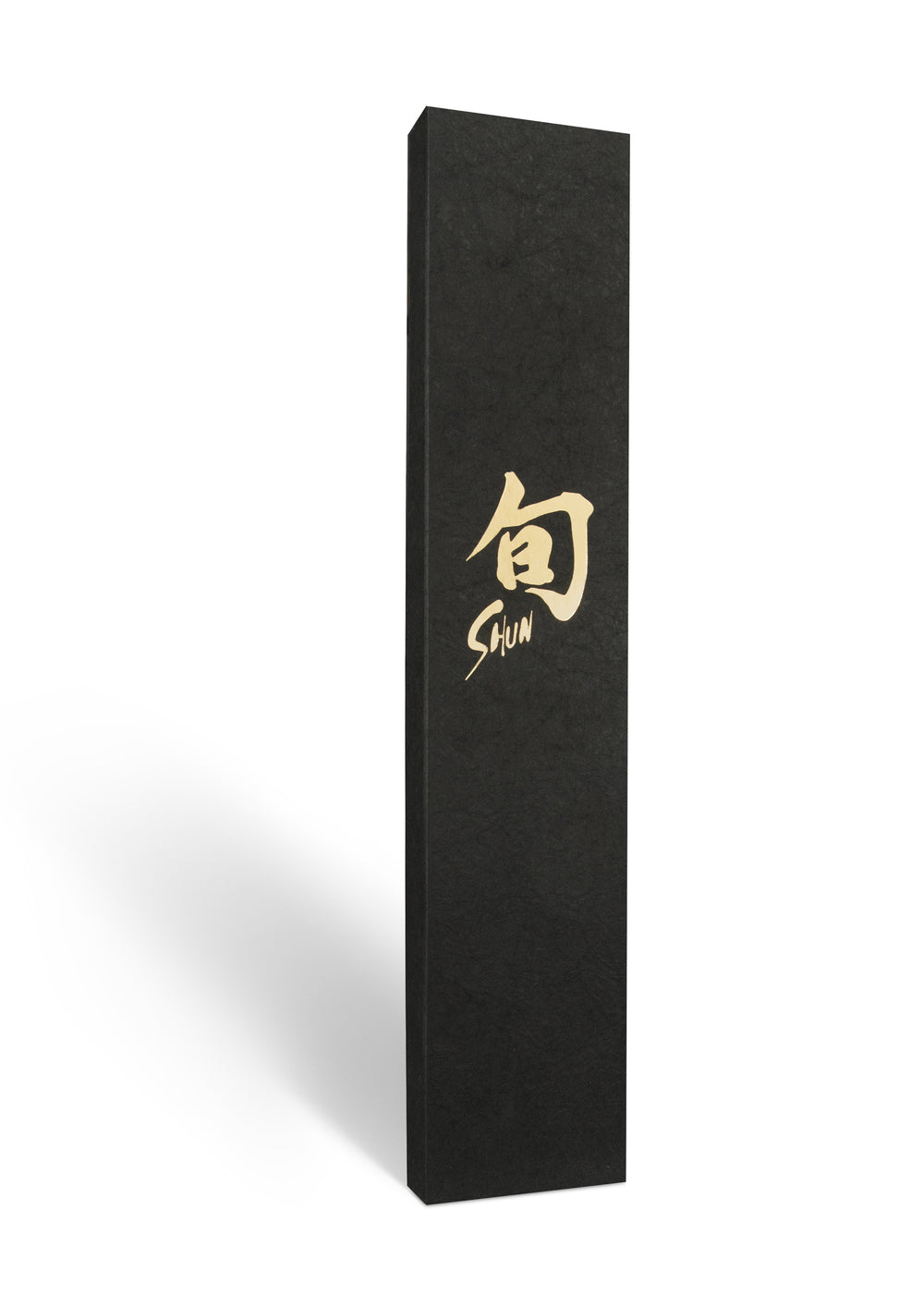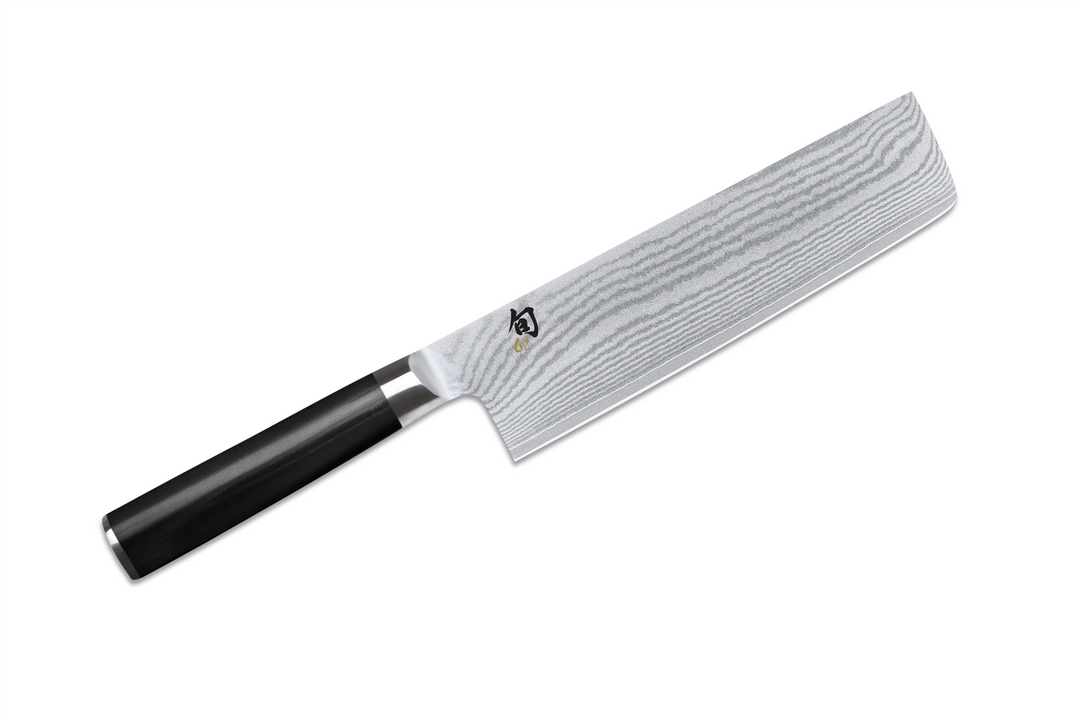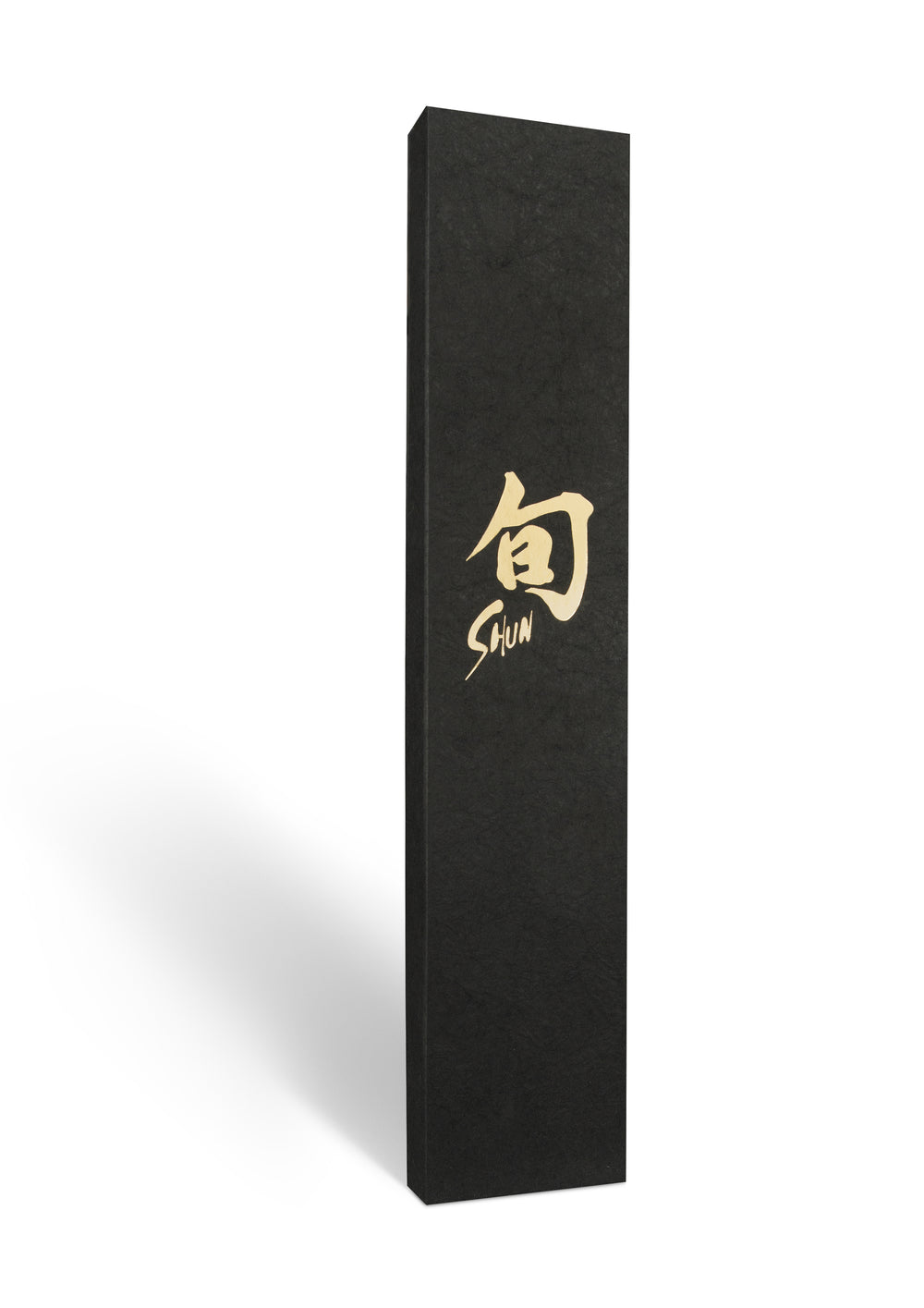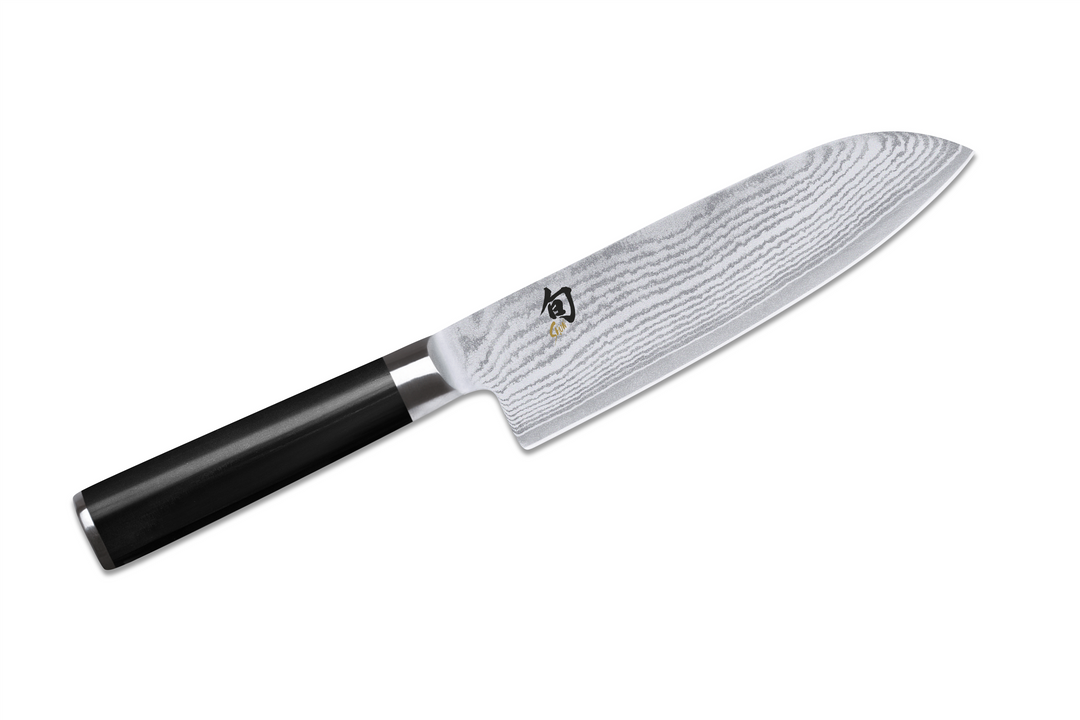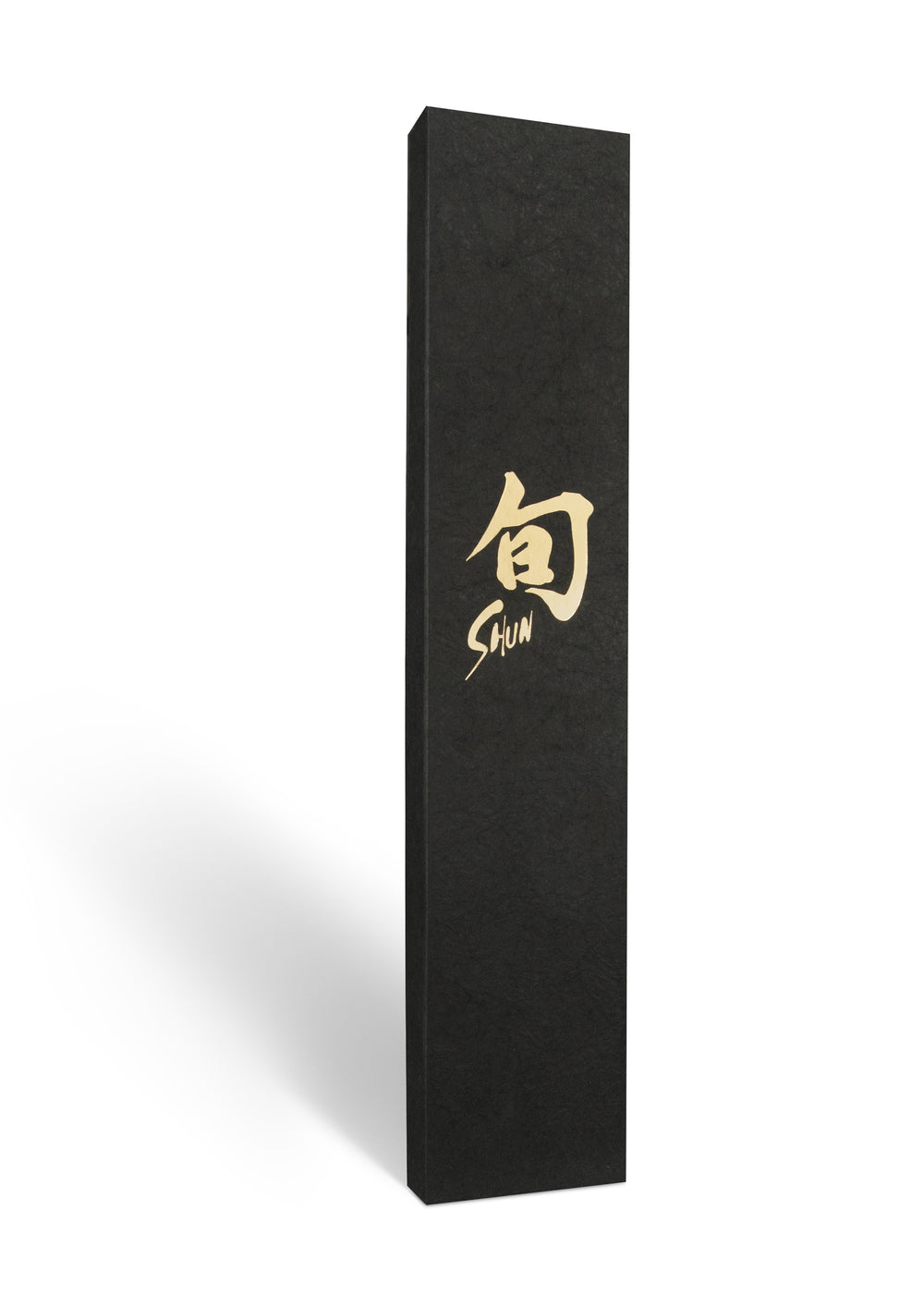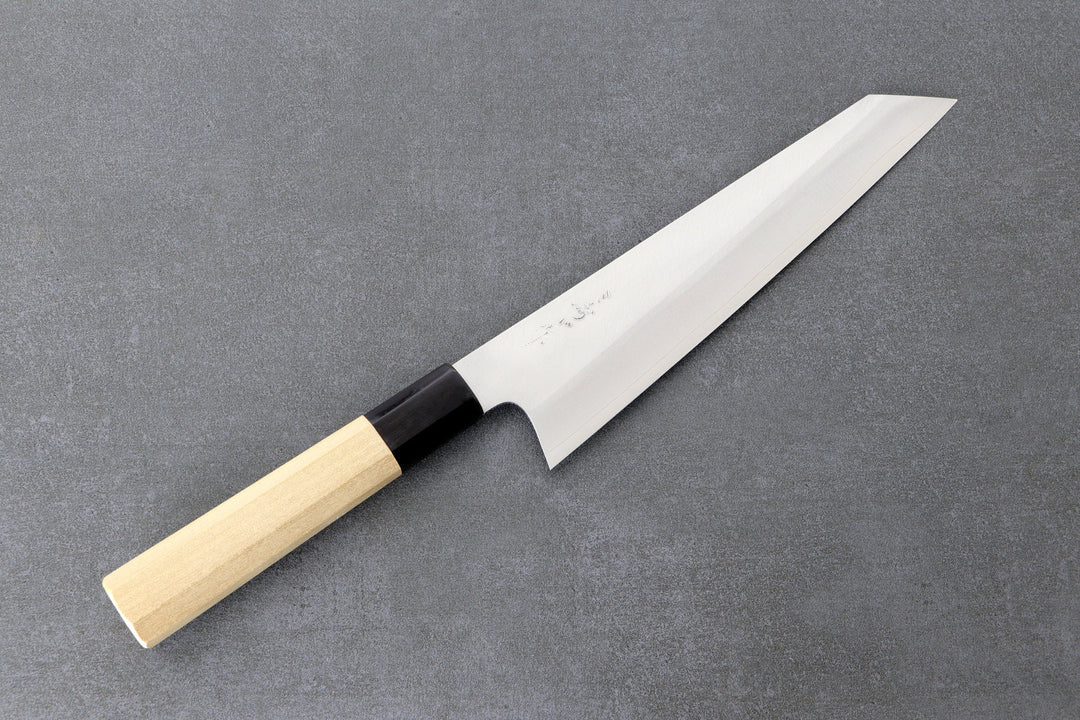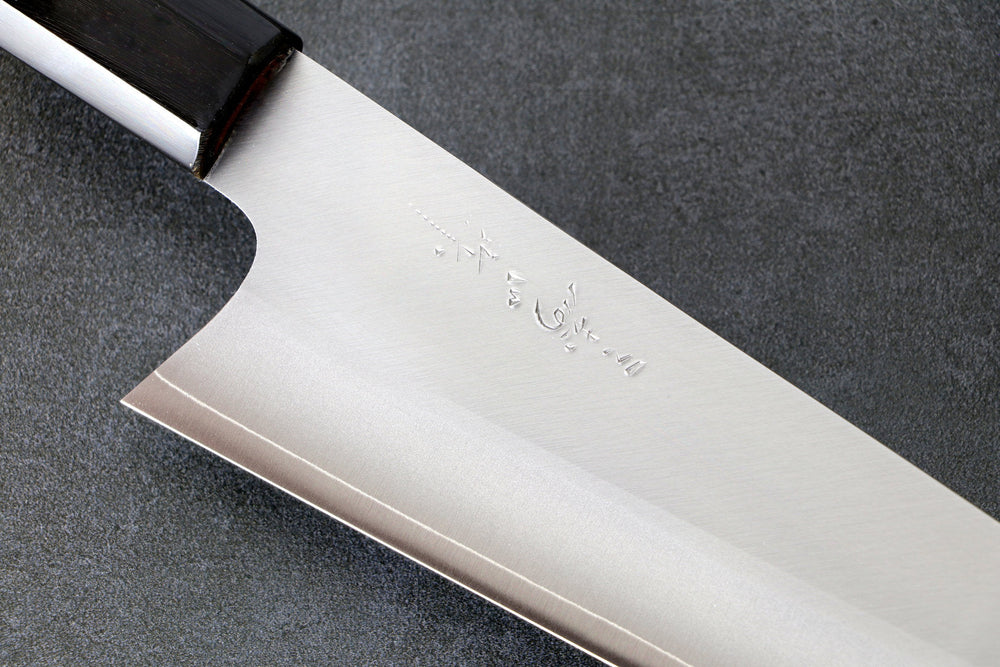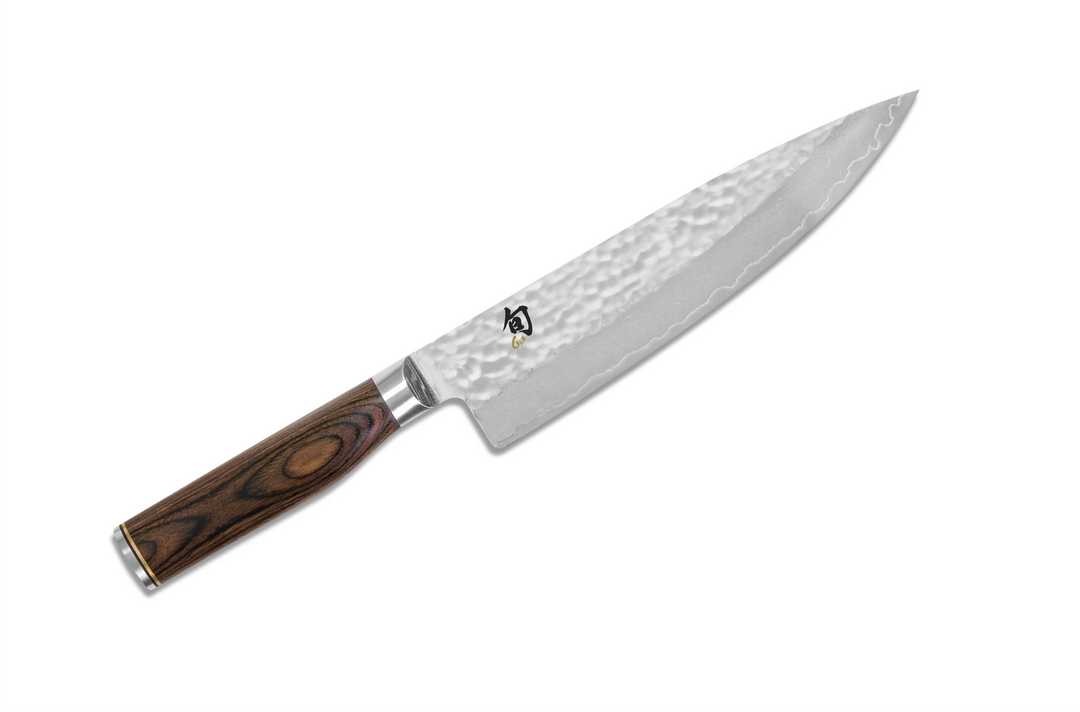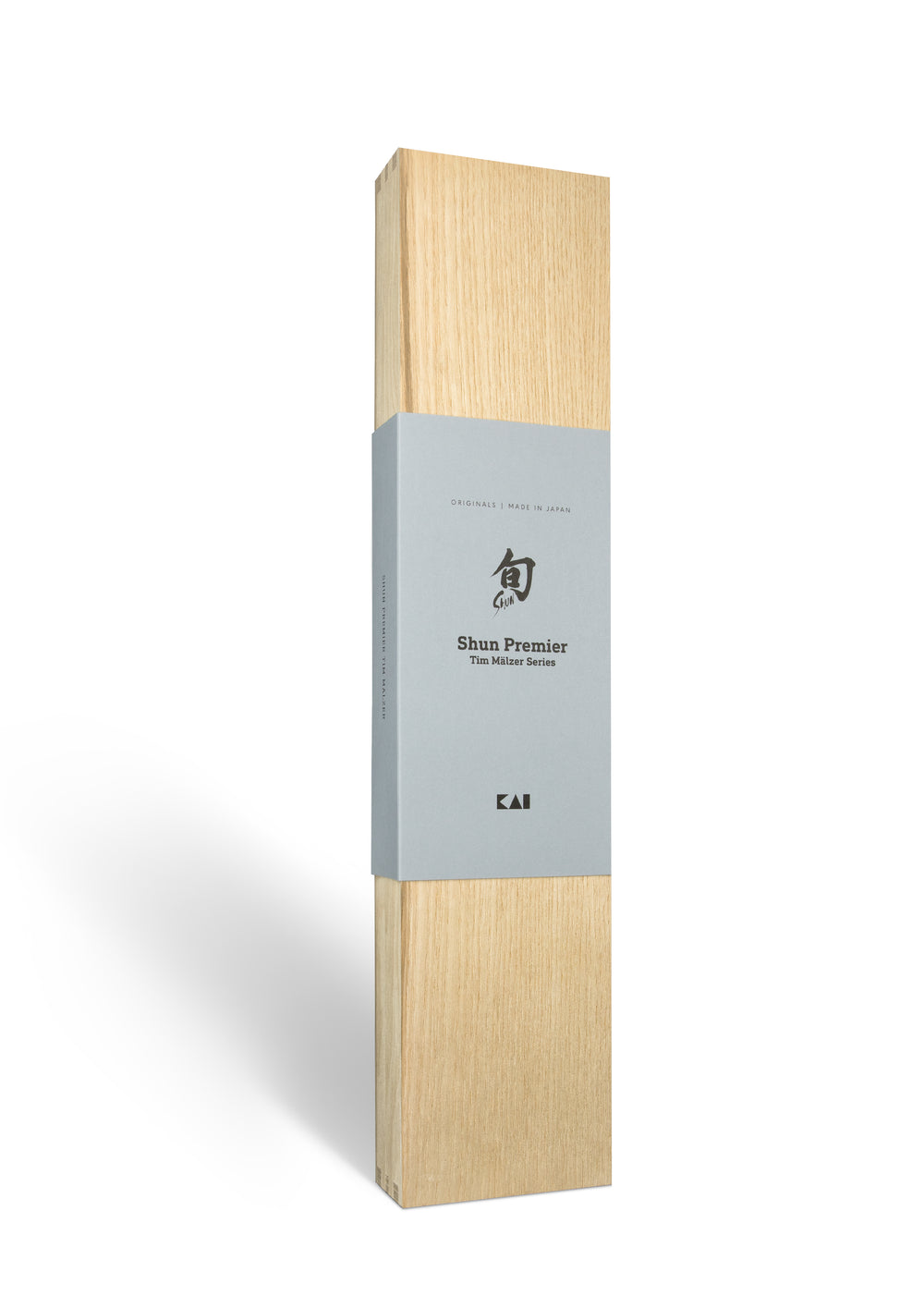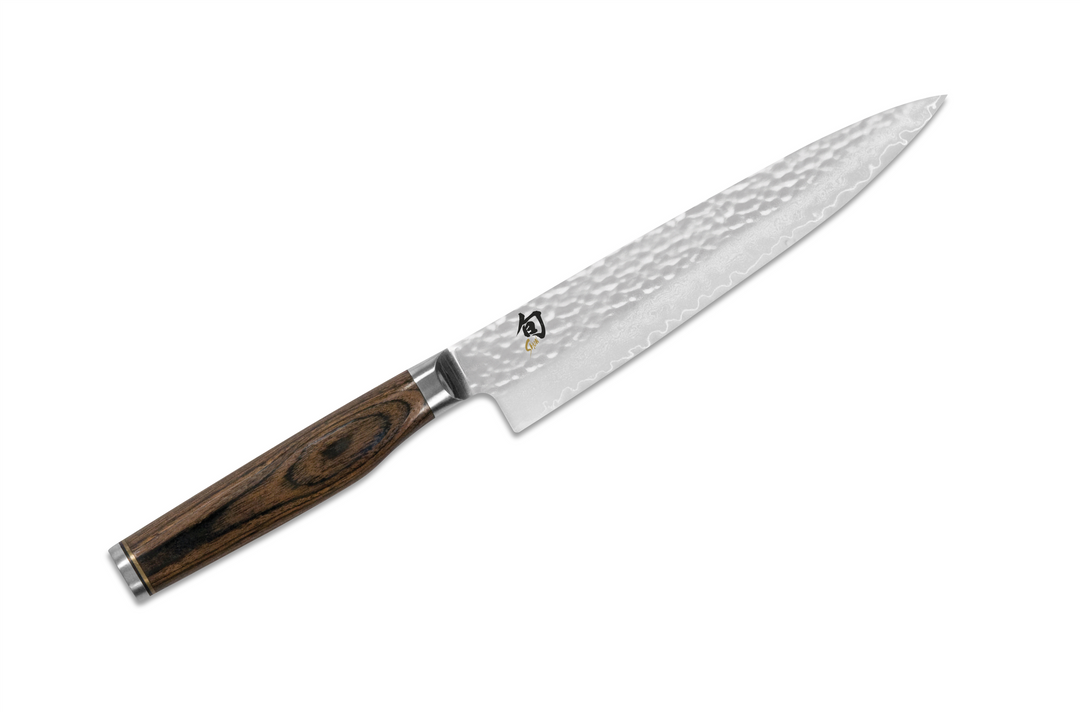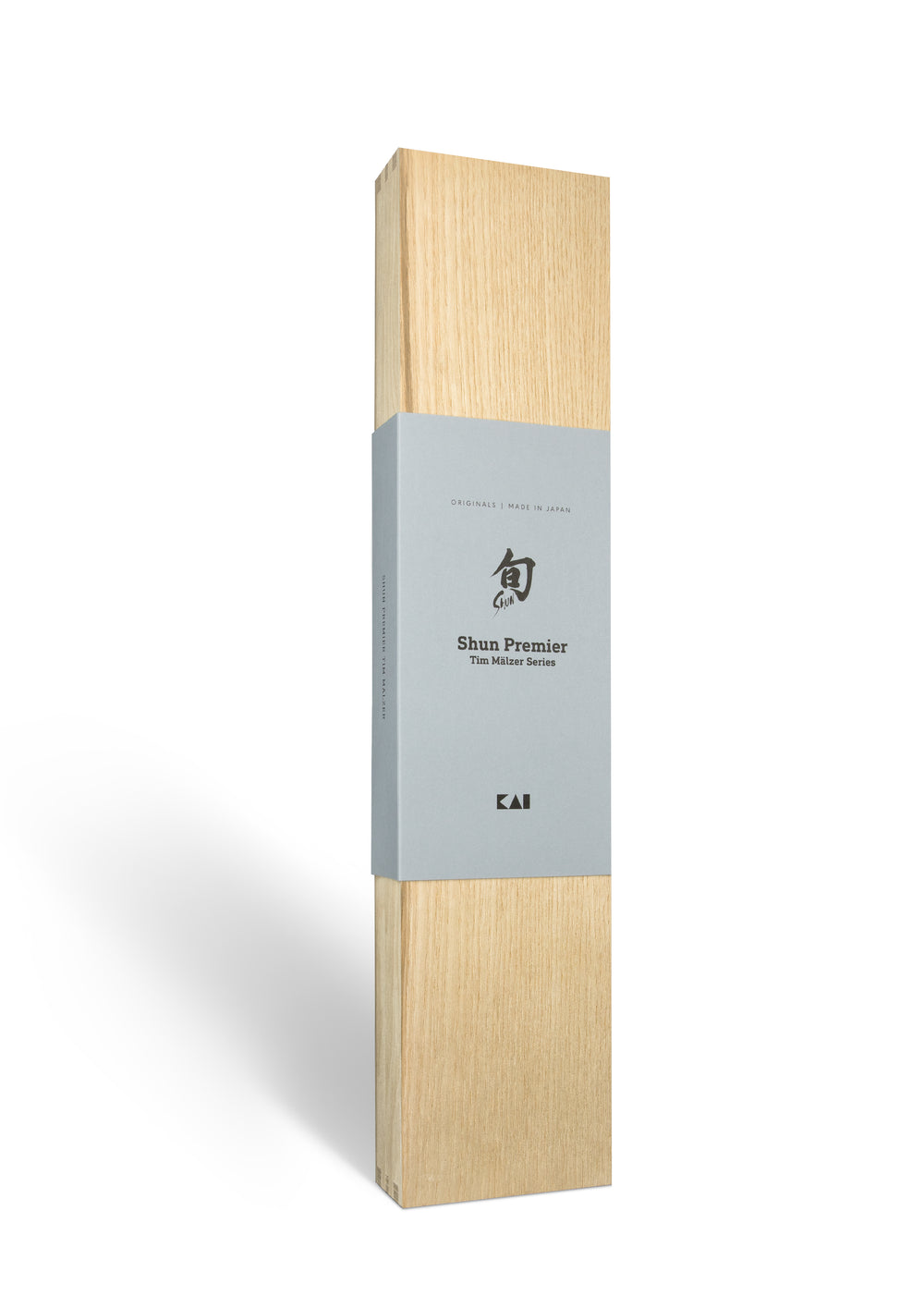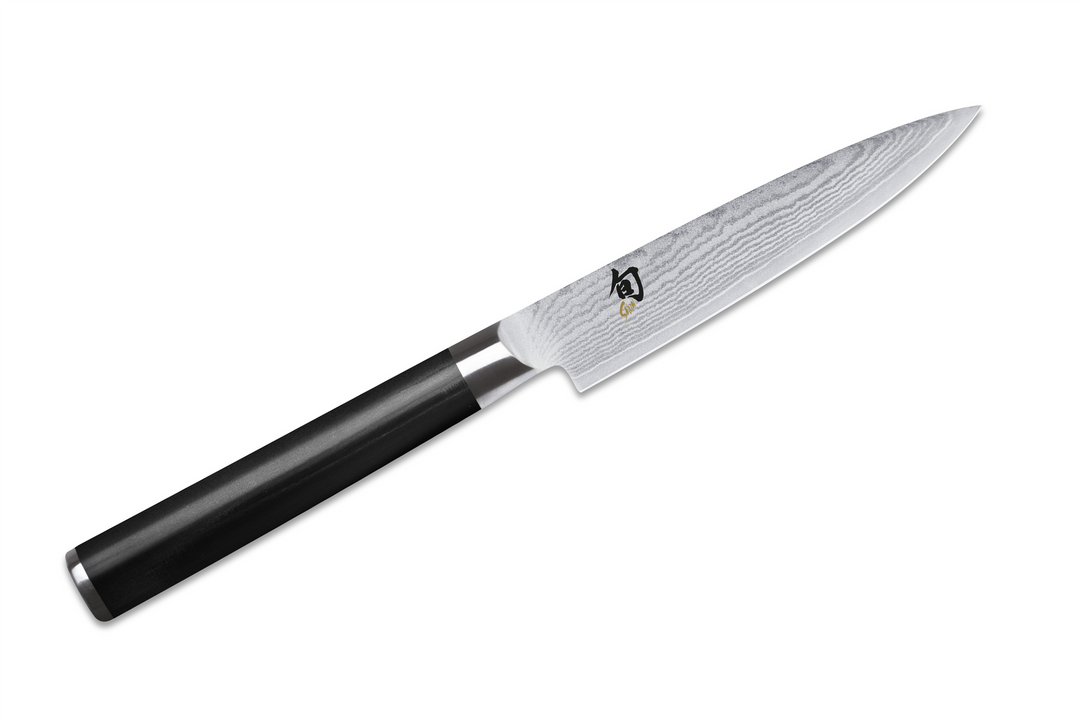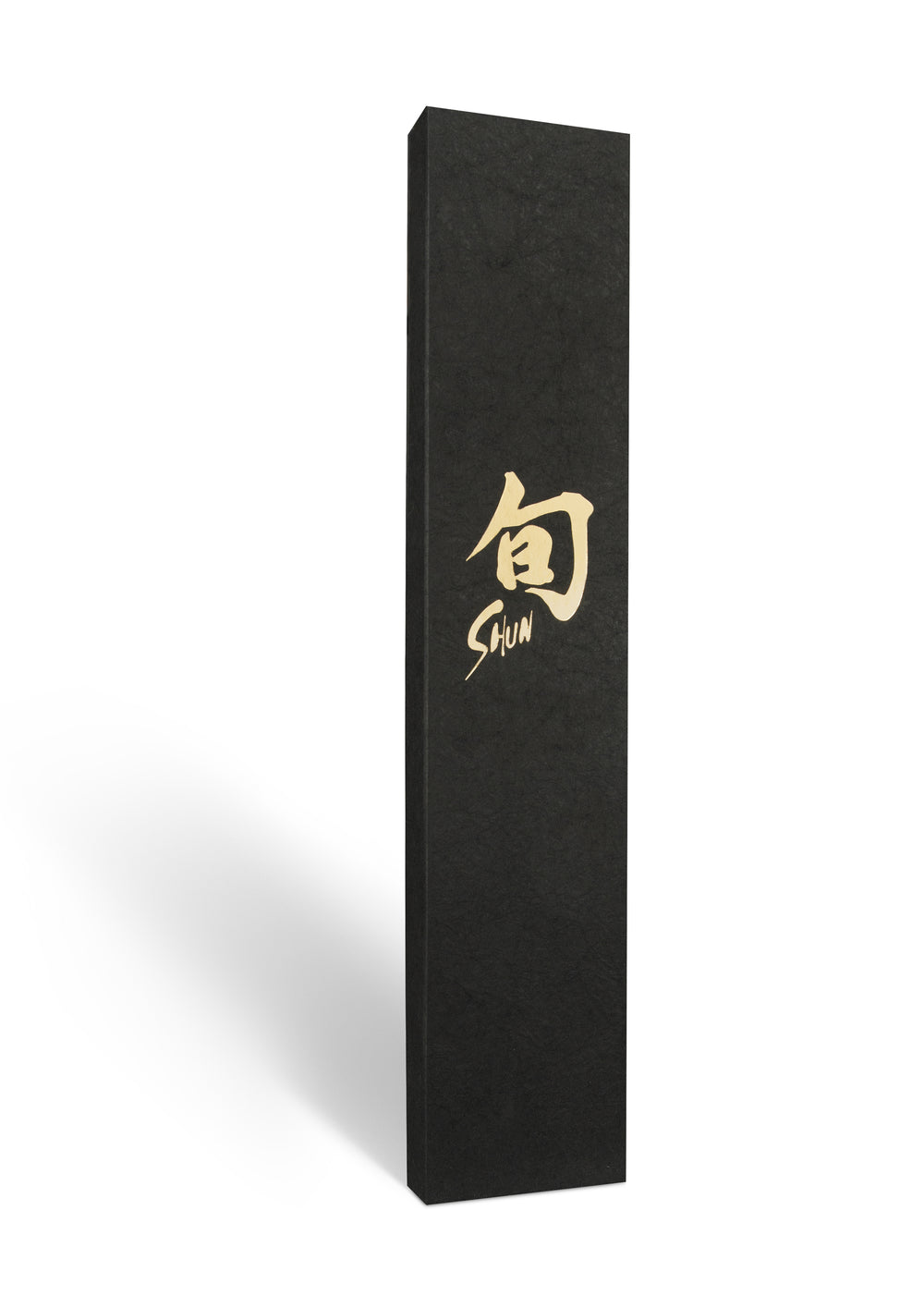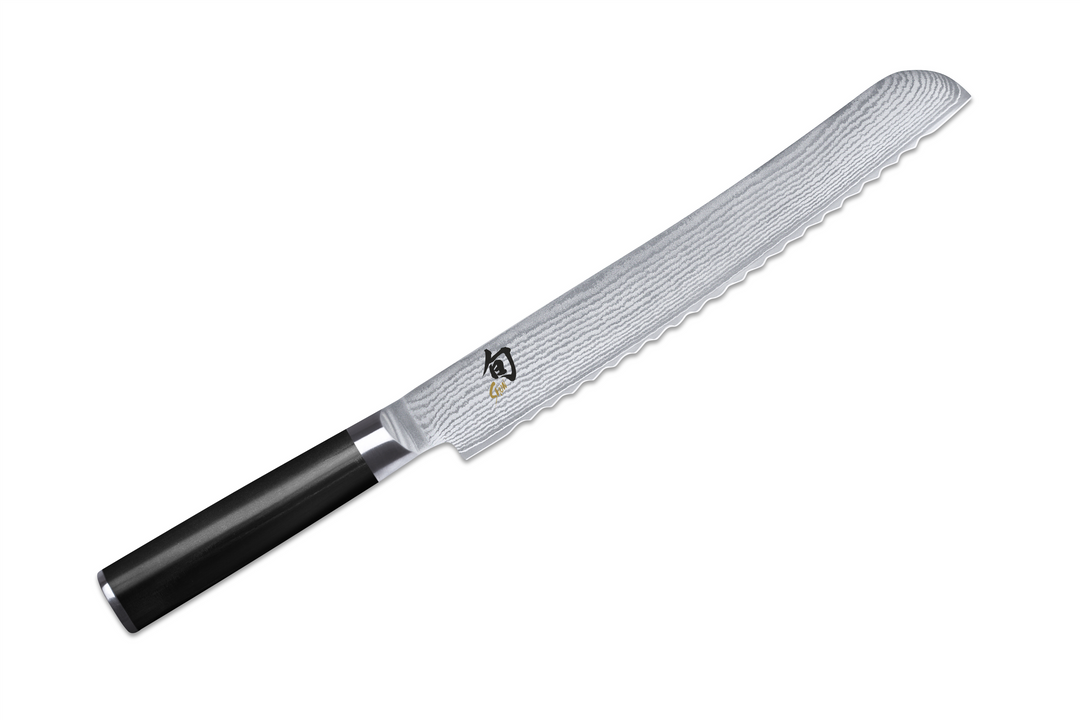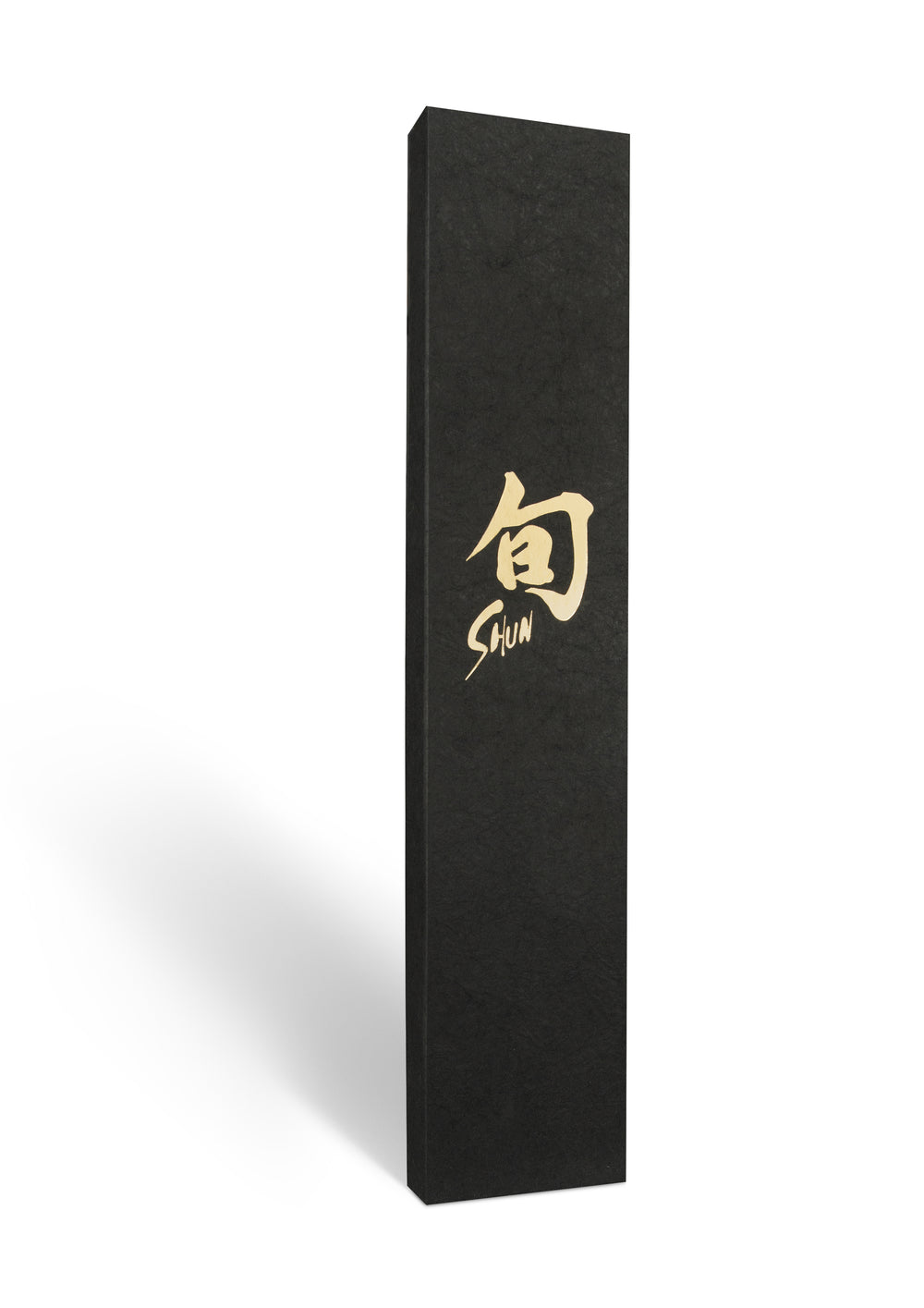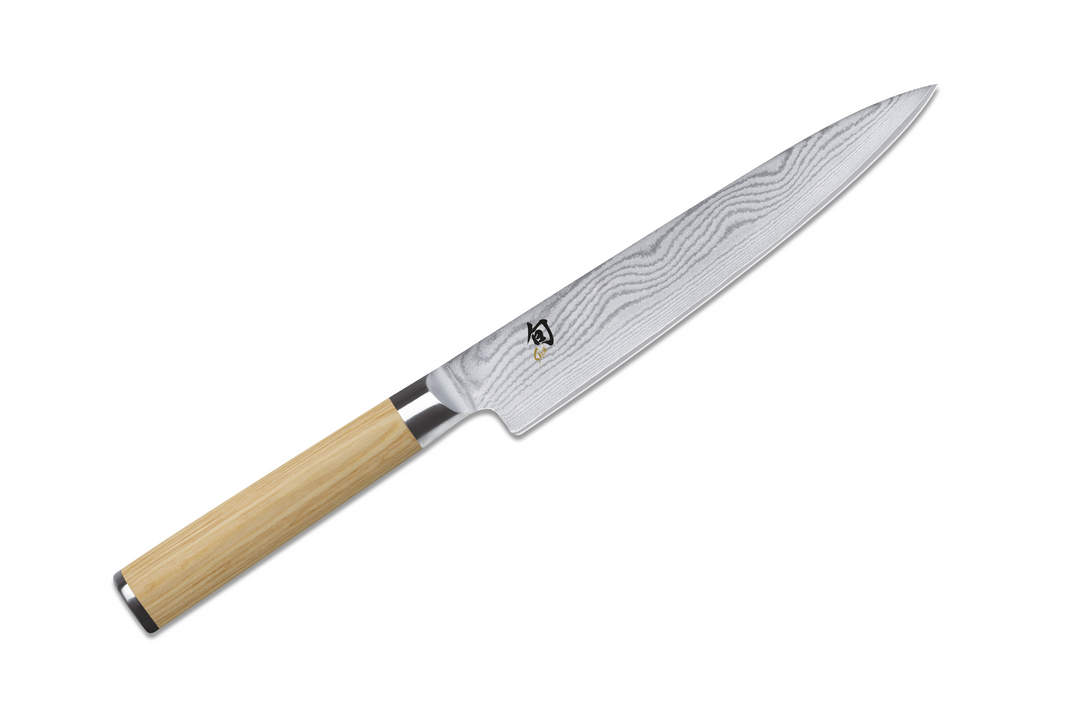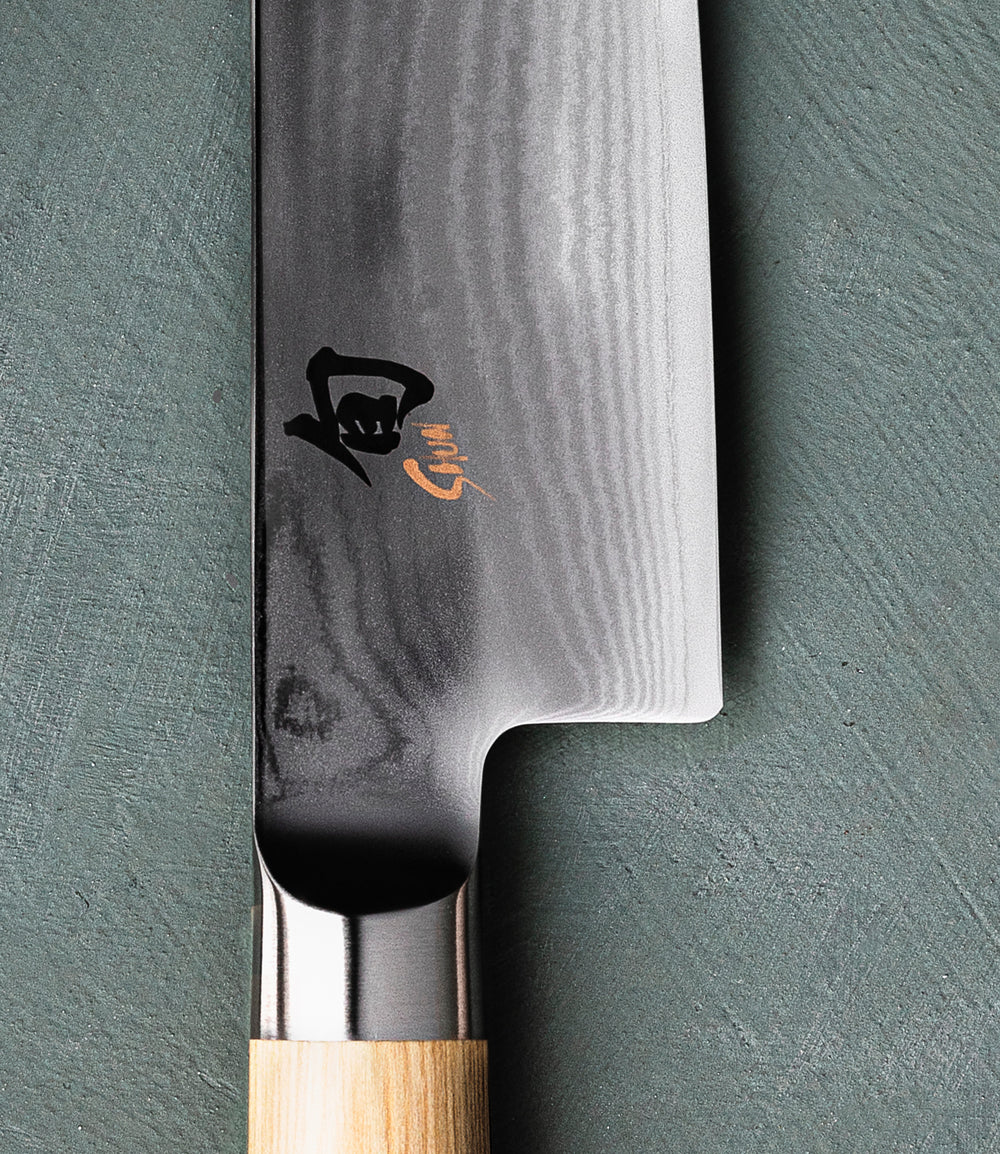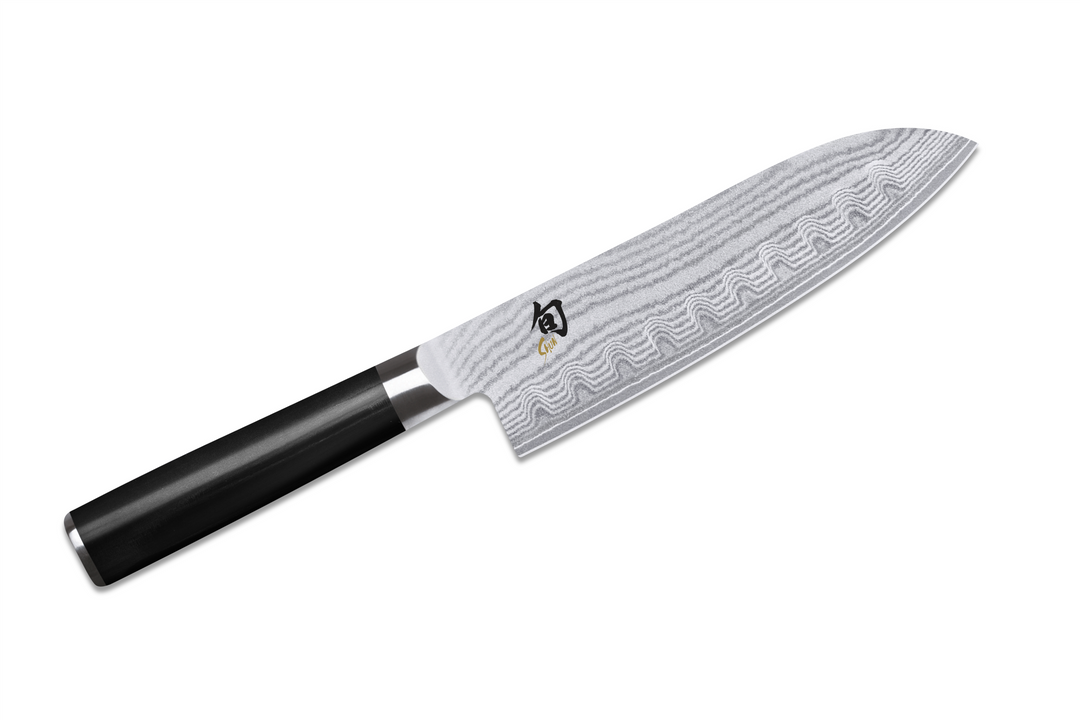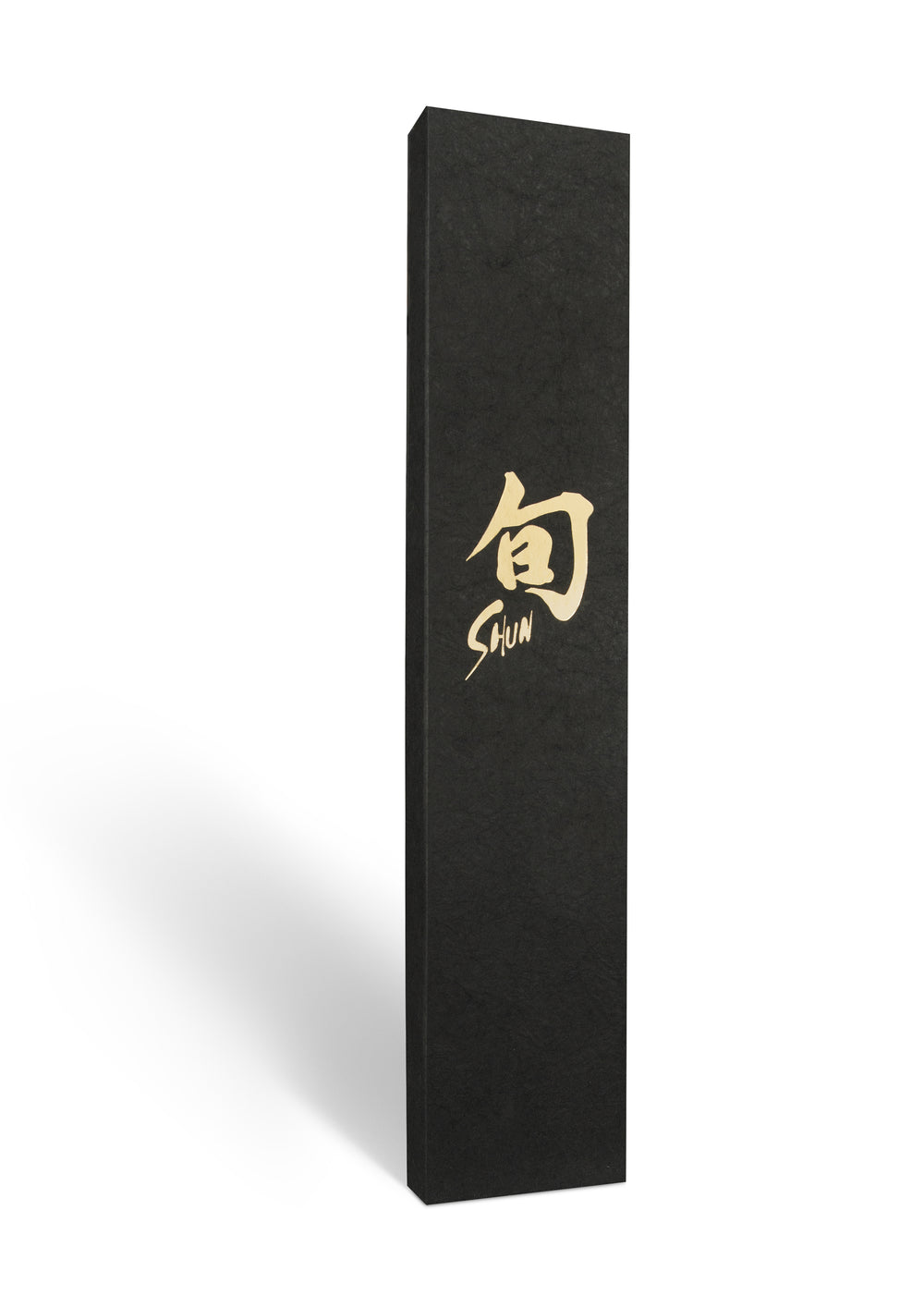VG10 - The solid all-rounder knife steel
VG10 steel is very widely used because this knife steel is harder than most western knife steels and does not oxidize as quickly. Especially customers who are looking for a compromise between good performance and low maintenance often choose this steel. Due to the vanadium content of 0.5%, the steel has good strength and toughness.
What is the difference between VG10 and Aogami steel?
This type of steel has an unbeatable advantage: ease of maintenance. This is due to the chromium content of 14.5 - 15.5%, VG10 is one of the stainless steel grades with this value. At the same time, the addition of chromium and other components lowers the carbon content in the alloy, thus also lowering the hardness potential compared to traditional aogami and shirogami steels.
VG10 steel reaches a hardness level of 59 - 61 HRC, whereas low rust Japanese knife blades reach hardness levels of up to 66 HRC. However, this is not to say that VG10 steel is not hard - compared to Western knives, this steel is still far superior in terms of hardness.
A VG10 blade is an excellent choice in terms of sharpening potential and ease of care, and is also well suited for beginners to the world of Japanese knives.
VG 10 KNIFE BLADES FROM JAPAN
VG10 steel is now more commonly used for kitchen knives. Often advertised as stainless steel, with a high grade. In fact, VG10 steel is offered as blade steel for blanks by steel manufacturers.
This is also the case with Hitachi from Japan, a company that produces many different types of steel. Often the steel is used in Japan for blades that are intended for export by the manufacturer.
VG10 PROPERTIES
VG10 steel can be classified as stainless steel. This knife steel has a composition with high chromium content and low carbon. The properties are therefore that the blade steel is a little harder than Western monostahl knives, but nowhere near as hard as classic Japanese knives with a composition with a lot of carbon in the steel. On the other hand, the surface of VG 10 steel is less prone to rusting due to the chromium content and is sometimes called "stainless steel content", which is not entirely accurate.
VG 10 STEEL AS A COMPROMISE
If you want to approach a traditional Japanese blade piece by piece, you can go the VG 10 steel route. Knives made of VG 10 steel Knives are often constructed like laminated steel. This means that there are different layers of steel - usually three. The outer layers are often stainless steel and the middle layer is VG 10 steel. This means that the blade or cutting edge is made of this steel. Rather rarely, VG 10 knives are made as mono steel blades.
Unlike other stainless steels or alloys, it can therefore be hardened particularly well.
3 LAYERS OF STEEL - STRUCTURE OF THE VG 10 KNIFE
Products made of VG 10 steel such as chef's knives are now often offered from China. Generally speaking, it is not difficult to produce a VG 10 steel in the form of a knife today, but it is worth taking a look at the details.
Kitchen knives from Japanese forges use their own laminate steel, because the layers of the steel have different thermal properties. Only those who combine the layers optimally through a clean process can get the maximum grade out of the VG10 steel and shape the center layer of VG10 into a sharp blade that holds its edge.
Is VG10 Damascus steel?
The term Damascus or Damascus steel is not protected or precisely defined. VG10 steel is therefore not Damascus steel. However, there are manufacturers of knives that etch a Damascus pattern on the blade. Often simple mono steel knives are advertised as high quality and associated with the term Damascus in various ways. So giving steels or an alloy of steels the title Damascus knife is very easy and often misleading.
Why are there so many different steels for knives?
Opinions about which steels are the best for knives vary widely. On the one hand, customers prefer knives with a high toughness of the steel. This toughness makes a knife more flexible, but the sharpness potential suffers. The reason lies in the interplay between hardness and flexibility.
The flexible steel category tends to include steel grades from European companies. Japanese forges tend to belong to the hard steel category. Each side brings advantages and disadvantages, because hardly any steel grade covers everything. However, HAP40 steel is worth a look ;)
IS VG10 STAINLESS?
No matter what steel and whether the price was high or low, any knife can theoretically oxidize. The price, the country of origin or other factors do not completely protect against rusting. From experience we can say that we ourselves have seen bread knives that have rusted.
Sometimes you can find the name gold steel for VG10. Gold does not rust, unlike VG10 steel. So gold standard is only for resistance to oxidation and not for price.
KNIFE METROPOLIS SAKAI
In Sakai you can find stores for cooking knives or accessories as well as sharpening stores in some streets on both sides. All categories of knives can be found here and among them also VG10 knives. These are more for tourists and export, but we have also seen VG10 knives in Japanese kitchens.


